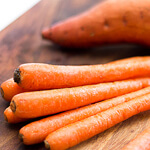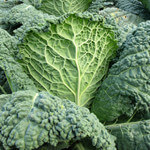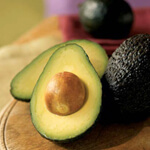 Vitamin A is the name given to a group of fat-soluble antioxidant compounds. It is considered an essential vitamin, and performs a large number of roles in our bodies including maintaining vision, supporting the immune system, and aiding gene transcription. Unfortunately, vitamin A deficiencies are becoming increasingly common worldwide. These deficiencies, which can result in deteriorating eyesight, rough skin, and greater susceptibility to disease, are almost always caused by poor diet. Therefore, the best way to increase our vitamin A intake is to simply eat more whole foods that are rich in it. This article focuses on the greatest sources of carotenoids, the plant-based form of vitamin A.
Vitamin A is the name given to a group of fat-soluble antioxidant compounds. It is considered an essential vitamin, and performs a large number of roles in our bodies including maintaining vision, supporting the immune system, and aiding gene transcription. Unfortunately, vitamin A deficiencies are becoming increasingly common worldwide. These deficiencies, which can result in deteriorating eyesight, rough skin, and greater susceptibility to disease, are almost always caused by poor diet. Therefore, the best way to increase our vitamin A intake is to simply eat more whole foods that are rich in it. This article focuses on the greatest sources of carotenoids, the plant-based form of vitamin A.
Excellent Plant-Based Sources of Vitamin A
Chlorella – Chlorella, a single-celled green algae that grows in freshwater pools, is one of the world’s most nutrient-dense foods. Of all the vitamins and minerals contained within it, however, chlorella is richest in vitamin A. In fact, just one ounce of dried chlorella contains an astonishing 14,364 international units of this essential vitamin, or 287 percent of our recommended daily intake (RDI). Additionally, the same serving of chlorella also contains 133 percent of our RDI of zinc – an important trace mineral that helps our bodies to absorb vitamin A.
Wheatgrass – Trailing closely behind chlorella in the vitamin A department is wheatgrass, another nutrient-dense supergreen that packs a whopping 12,000 international units of the vitamin per ounce. Wheatgrass is also extremely rich in vitamin A’s fellow antioxidants, vitamins C and E, whose free radical-scavenging abilities can help prevent macular degeneration, an eye disease that can lead to blindness.
Sweet potatoes – Despite their name, sweet potatoes are only distantly related to regular potatoes, and their nutritional value is greater. For example, whereas cooked white potatoes contain only minimal amounts of vitamin A, cooked sweet potatoes are packed with it. In fact, just one ounce of these starchy, sweet-tasting root vegetables contains more than one hundred percent of our RDI – more than any other regular vegetable. They’re also a good source of fiber and vitamin C. However, sweet potatoes are an acquired taste and liking regular potatoes is no indication that you’ll like sweet ones.
Kale – Though kale is best-known for its incredible vitamin K content, it’s also packed to the brim with vitamin A. One ounce of this leafy green vegetable, which is one of the healthiest vegetables in the world, contains 4,117 international units of vitamin A, or 82 percent of our RDI. This makes kale the greatest leafy green source of vitamin A, besting both spinach and broccoli.
Carrots – That carrots are rich in vitamin A shouldn’t surprise anyone who knows that beta-carotene, one of the most important provitamin A carotenoids, was named after them. Yes, eating one ounce of these popular orange vegetables supplies our bodies with 95 percent of our RDI, as well as decent amounts of manganese, fiber, and vitamin K. Generally speaking, the deeper the orange color, the more beta-carotene the carrot contains.
Many spices, such as cayenne pepper and paprika, are also excellent sources of carotenoids. These spices can help give nutritionally-average meals an added boost of essential vitamins.
Good Animal Sources of Vitamin A
Though most people obtain the bulk of their vitamin A from the carotenoids present in plant foods, the preformed vitamin A (“retinoids”) found in animal products shouldn’t be overlooked. According to the World’s Healthiest Foods website, cow’s milk is the best source of retinoids, with shrimp, eggs, and salmon following thereafter. Since vitamin A is stored in the liver, it’s unsurprising that liver contains more vitamin A than any other part of the animal, with veal liver containing the most of all.






